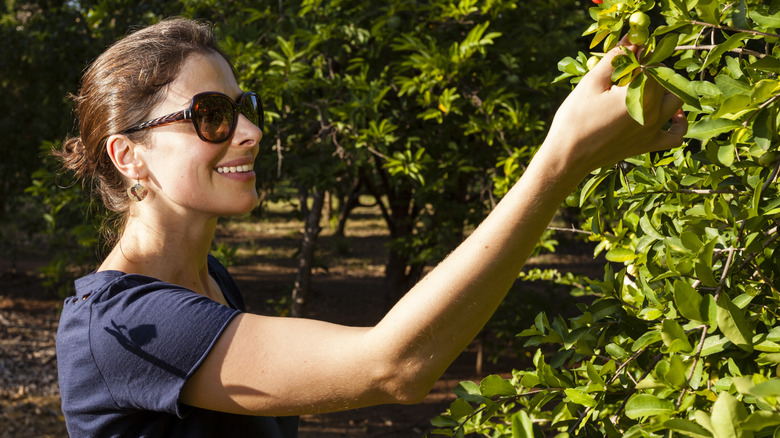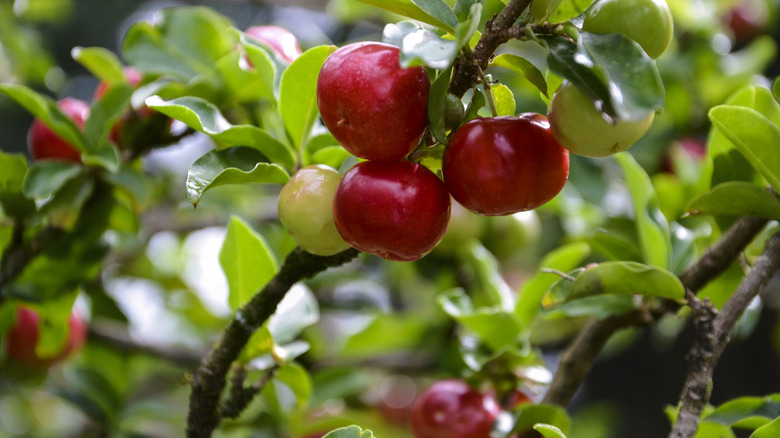The Juicy, Tart Cherry-Like Bush Variety That Grows Well In Florida
Cherries are fun and delicious fruits to grow in your backyard orchard, but they don't grow well everywhere. Sweet cherries (Prunus avium) are often hardy in USDA zones 5 through 9, while tart cherries (Prunus cerasus) tend to be hardy in zones 4 through 8. This can present quite a problem for gardeners in a state like Florida, where the hardiness zones range from 8b all the way to 11b. Fortunately, there is a solution. While they are not true cherries, Barbados cherries (Malpighia glabra), also known as acerola, are both a delicious and beautiful way for gardeners in Florida and other Southern states to grow juicy cherry-like fruits easily.
Hardy in zones 9b through 11, Barbados cherries are an ideal fit for the growing conditions in much of Florida. While they generally grow as shrubs, you can also prune their lower branches and grow them as trees. Barbados cherries generally don't grow past 12 feet, though have been known to reach as tall as 20 feet on occasion. Thanks to their relatively petite size, they're perfect even for those with smaller yards. Some people even opt to grow them as indoor fruit trees to harvest year round.
Caring for a Barbados cherry plant
Barbados cherries are native to the Caribbean, Central America, and Mexico, and while they grow well in parts of the Southern United States, they are not invasive or overly aggressive. While Barbados cherries require full sun to thrive and fruit well, that shouldn't be a problem in the Sunshine State. Barbados cherries also require moist soil, so regular watering is a must.
Make sure to plant your Barbados cherry in well-draining soil and fertilize them twice a year. While they are relatively low maintenance plants, be sure to provide your shrub with protection during cold snaps, as they can't handle temperatures below 28 degrees Fahrenheit. Fortunately, there are a variety of good ways to protect trees from frost damage.
In addition to the pop of color that Barbados cherry plants add to your landscape thanks to their berries and charming pale pink flowers, their beautiful red berries are also a delicious source of vitamin C. These plants could be a perfect way to dip your toes into backyard orchard culture and start growing your own food. They are also a pollinator magnet, and bees love their blooms.

